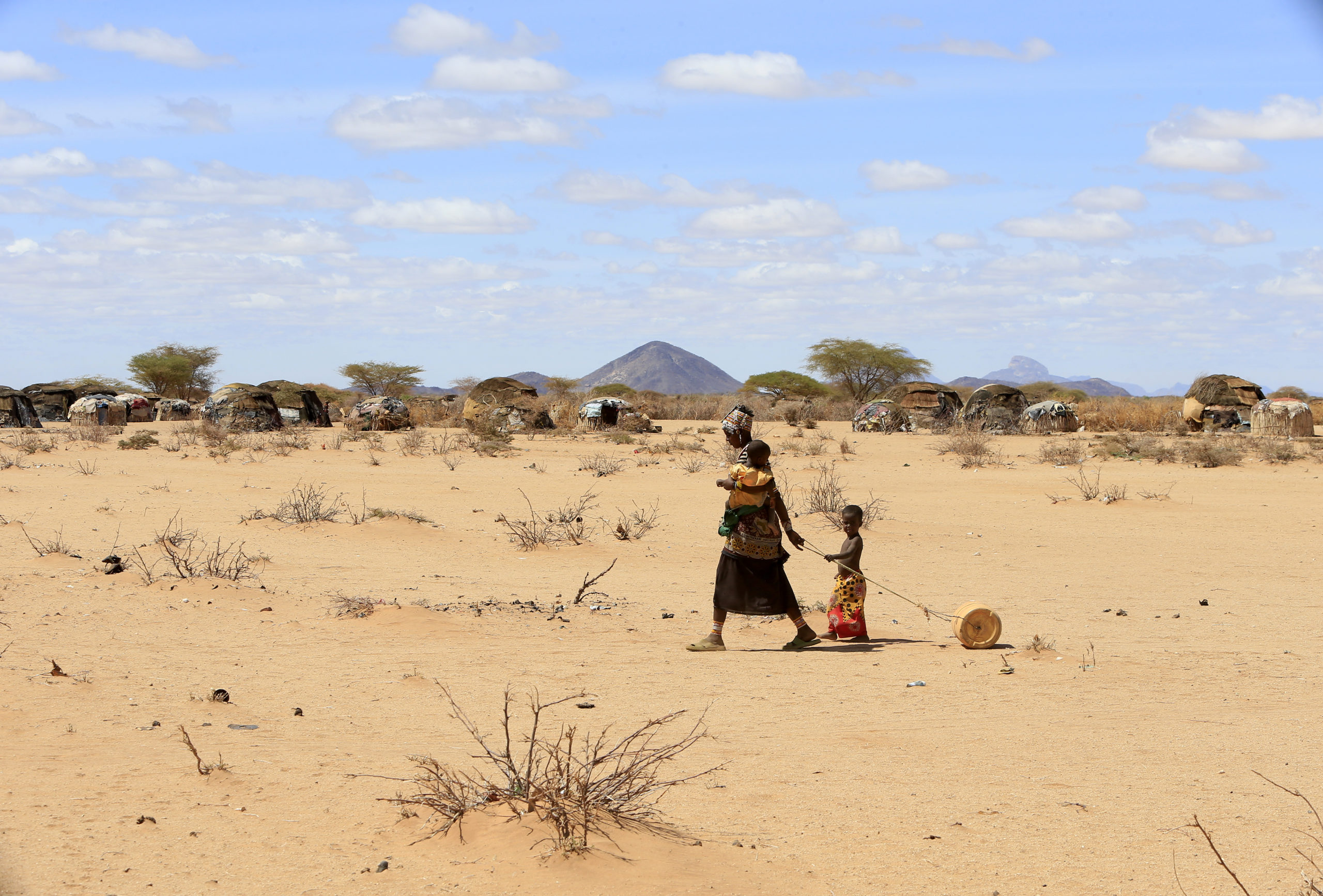I have many thoughts when my children sleep hungry. I wonder – how will the day be like tomorrow? How will I help my children?
Nkatiye, a mother of nine children lives in Kargi, a remote settlement sitting in a large dry plain of sand, two hours from Marsabit town in northern Kenya.
She is from the Rendille community who are semi-nomadic pastoralists, keeping goats and camels for food and income.
But the seasons have changed. This area like the rest of northern Kenya has grown hotter and drier and a severe drought has ensued. Nkatiye has not seen a drop of rain for three years.
The dry spell has killed all her 100 goats and 31 camels. Many families in Kargi have suffered huge losses, pushing the resilient community to levels of hunger they have not experienced before.
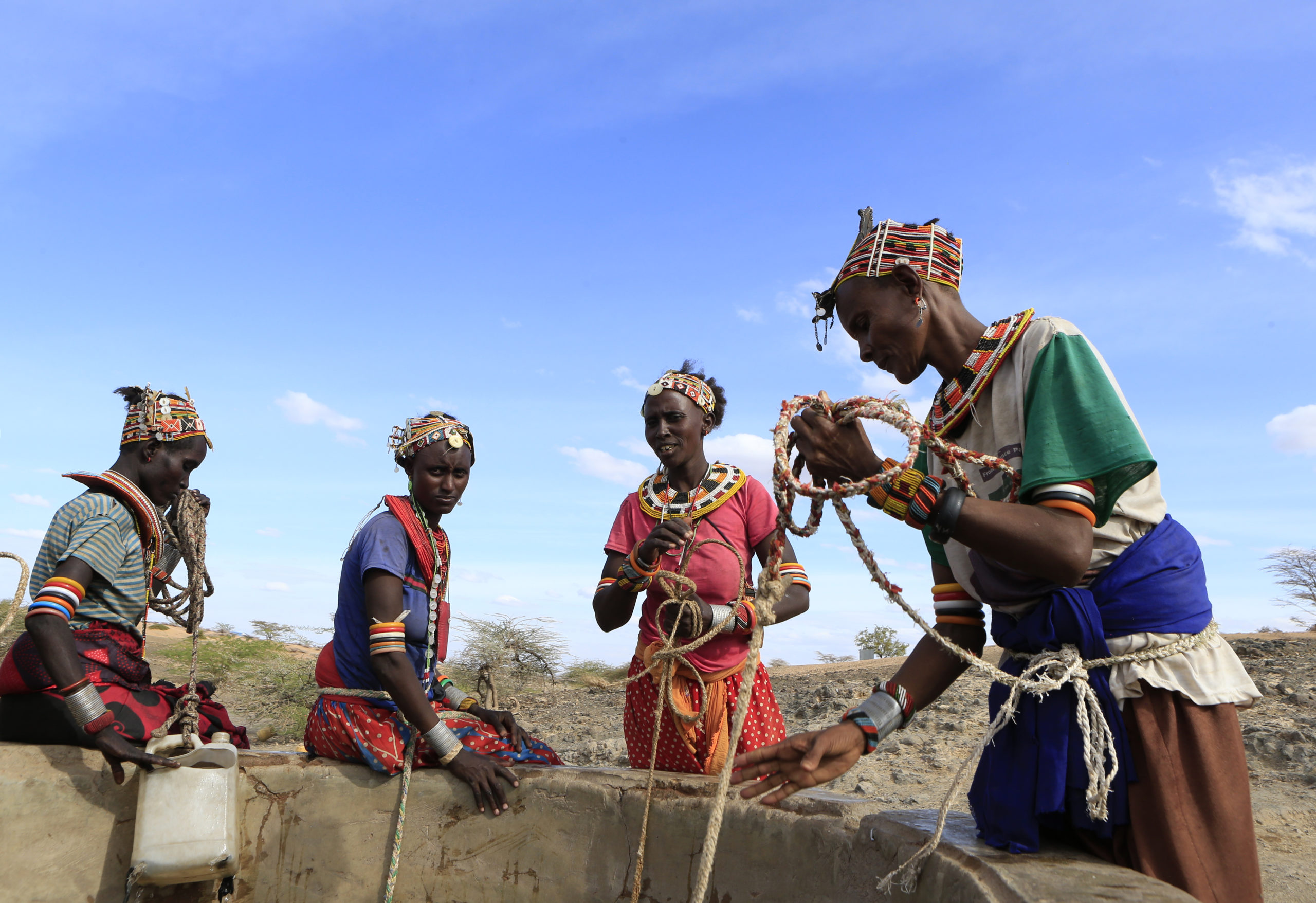
The United Nations says Kenya has lost about 1.5 million livestock to the drought.
Official data shows that in the past, droughts in the arid and semi-arid areas in northern Kenya occurred every 10 years, but they are now happening every two to three years. The dry seasons are frequent and they last longer, an incident blamed on human-induced climate change.
David Dabalen, a health community worker with the local health centre has noticed a rise in malnutrition cases in Kargi, during screening exercises. The centre only has a capacity to reach 2,000 children within five outreach sites.
If the drought continues like this, my worry is that we will lose many children. We have already placed 400 in the supplementary feeding programme and referred 20 severe cases to the county hospital. This drought will cause a lot of damage to the children if it persists
A few months ago, Nkatiye could purchase numerous household items from the sale of one goat, but high food prices have reduced that possibility sometimes by up to 50 percent.
The people blame the traders and the local government for the prices says Namarei Buroya, a local shopkeeper. They do not understand about the war in Ukraine or the effects of the outside world.
As a coping mechanism families buy food items from Namarei on credit. “They come and beg and ask for help,” Namrei explains. “So I give them a little of what they need and one day, when they have a bit of money they will clear their debt. There is a drought yes, but people still have to eat.”
A remarkable spirit of social sharing also exits between neighbours in the villages, which has greatly helped families like Nkatiye’s survive the drought this far.
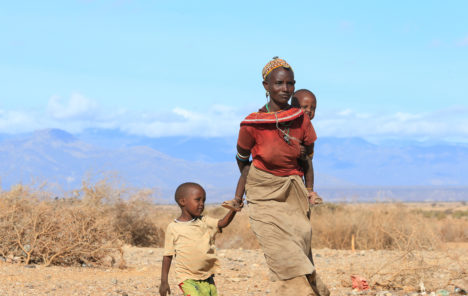
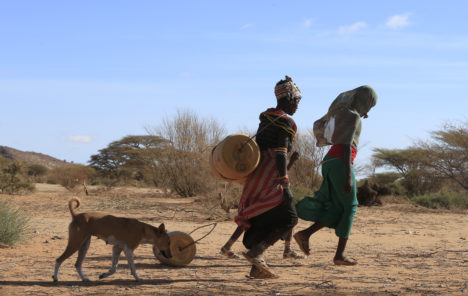
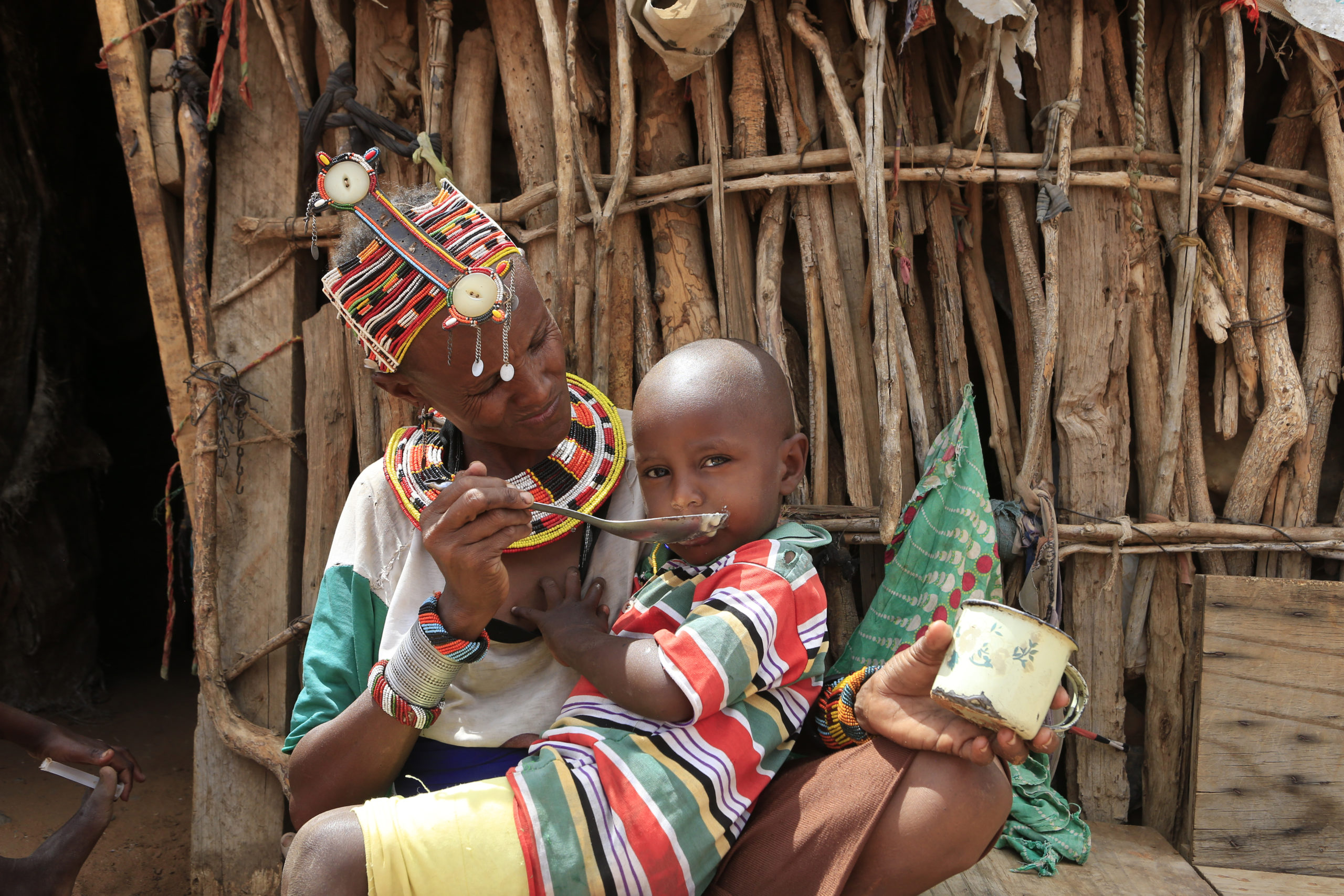
Nkatiye is determined to remain strong for her children, but she admits her body is growing weaker, and she could be fighting a losing battle.
“Without money and wealth, I have nothing to hold onto right now,” she says. “Look at what I am wearing, look at my form. I do not have soap to clean our clothes and you can already see my situation. I am afraid I will lose my children to this drought or I will die of hunger….”
Given the human suffering and looming humanitarian crisis in the Horn of Africa region, and in particular its possible impact on children at risk of losing parental care or being separated from their families, SOS Children’s Villages has launched an emergency programme to provide 300,000 people with humanitarian assistance and recovery support. The emergency programme will address drought-related needs like food security, sanitary supplies, livelihoods, and nutrition across four countries – Ethiopia, Kenya, Somali, and Somaliland.
If you donate to our emergency readiness fund, you can support children and families in unexpected, escalating or urgent crises such as this one. Your support allows us to provide assistance wherever it is needed most: https://www.soschildrensvillages.org.uk/how-you-can-help/make-a-donation/emergency-giving/
